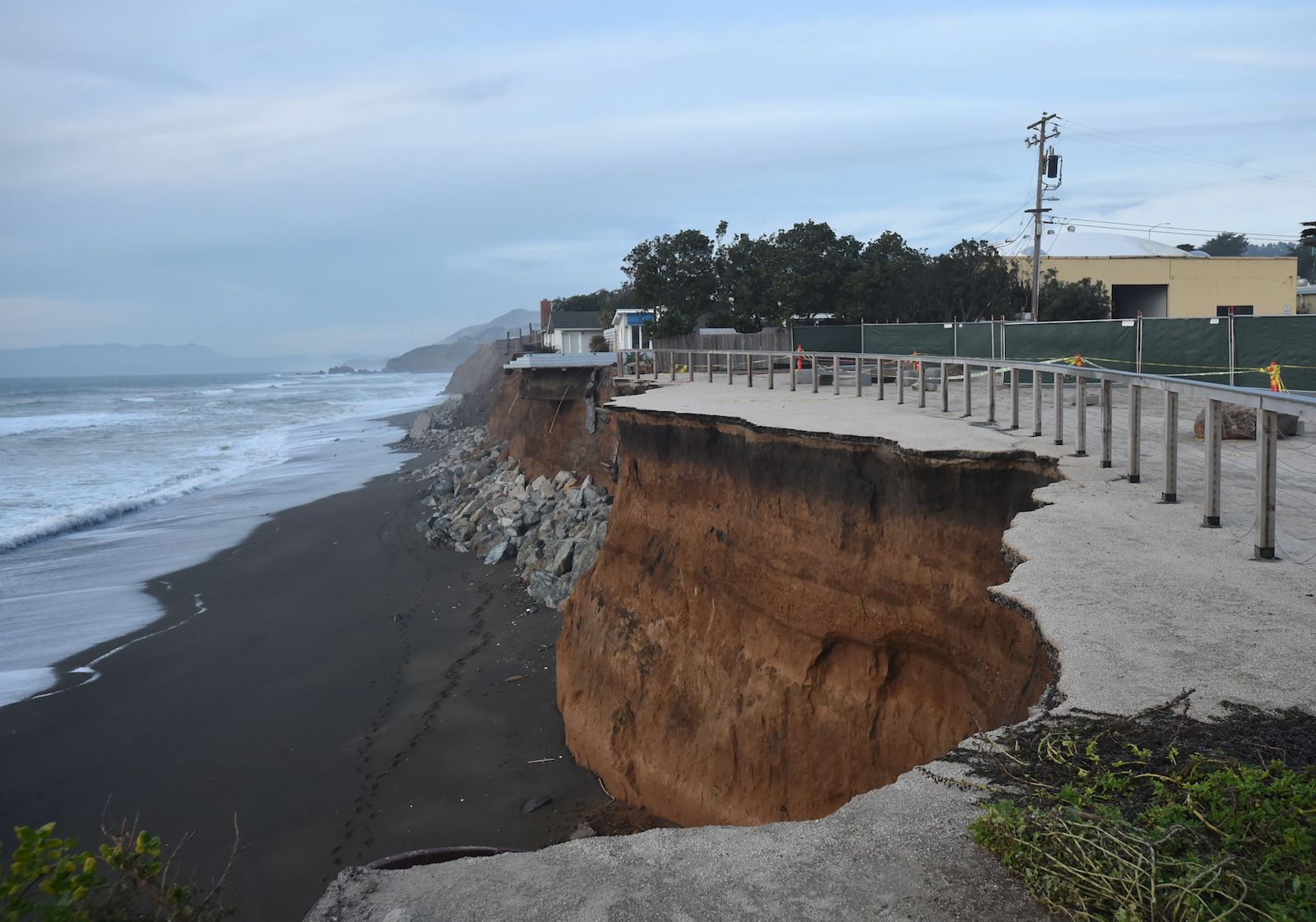Rising Sea Levels: Catastrophe For Coastal Communities

Table of Contents
The Mechanisms of Rising Sea Levels and Their Impact
Rising sea levels are a multifaceted problem stemming from a combination of factors. Understanding these mechanisms is crucial to grasping the scale of the challenge.
Thermal Expansion: As global temperatures rise, ocean water expands in volume. This thermal expansion contributes significantly to the overall increase in sea level.
- The rate of thermal expansion is accelerating, with projections indicating a substantial contribution to future sea-level rise.
- Studies estimate that thermal expansion accounts for approximately 30-50% of observed sea-level rise.
- Future increases in ocean temperature will further exacerbate this effect, leading to even greater sea-level rise in the coming decades.
Melting Glaciers and Ice Sheets: The accelerated melting of glaciers and ice sheets in Greenland and Antarctica is a major driver of rising sea levels. These colossal ice bodies contain vast amounts of frozen water.
- The rate of ice melt in Greenland and Antarctica has increased dramatically in recent years, contributing significantly to global sea level rise.
- The volume of water released from melting glaciers and ice sheets is immense, adding to the overall rise in ocean levels.
- Scientists project that continued melting of these ice sheets could lead to several meters of sea-level rise over the coming centuries, posing an existential threat to many coastal communities.
Coastal Erosion and Flooding: Rising sea levels exacerbate coastal erosion and increase the frequency and severity of flooding in low-lying areas. This has devastating consequences for coastal infrastructure and ecosystems.
- Wave action, storm surges, and high tides are intensified by higher sea levels, leading to increased coastal erosion.
- Low-lying coastal areas experience more frequent and severe flooding, damaging homes, businesses, and infrastructure.
- The loss of coastal ecosystems, such as mangroves and salt marshes, which act as natural buffers against storms and erosion, further exacerbates the problem.
Socioeconomic Impacts on Coastal Communities
The impacts of rising sea levels extend far beyond physical changes to coastlines. They have profound and devastating socioeconomic consequences for coastal populations worldwide.
Displacement and Migration: Rising sea levels and increased flooding are forcing the displacement of people from coastal areas, creating climate refugees.
- Millions of people living in low-lying coastal regions are at risk of displacement due to rising sea levels and increased flooding.
- Island nations and coastal communities in developing countries are particularly vulnerable, facing potential loss of land and livelihoods.
- The mass migration of climate refugees will place immense strain on resources and infrastructure in other regions.
Economic Losses: The economic consequences of rising sea levels are staggering, including damage to infrastructure, loss of tourism revenue, and the decimation of fishing industries.
- Damage to coastal infrastructure, such as roads, bridges, and buildings, represents substantial economic losses.
- The tourism industry, which relies heavily on coastal areas, suffers significant revenue losses due to damage and disruption.
- Fishing industries are impacted by saltwater intrusion into freshwater systems, habitat loss, and changes in fish populations.
Impacts on Public Health: Rising sea levels pose significant public health risks, including increased exposure to waterborne diseases, mental health issues related to displacement, and the spread of vector-borne illnesses.
- Increased flooding leads to the contamination of water sources, increasing the risk of waterborne diseases like cholera and typhoid.
- Displacement and loss of livelihoods can cause significant mental health problems, including anxiety, depression, and PTSD.
- The spread of vector-borne illnesses, such as malaria and dengue fever, is exacerbated by changes in water levels and habitats.
Mitigation and Adaptation Strategies
Addressing the challenge of rising sea levels requires a two-pronged approach: mitigation and adaptation.
Global Climate Action: The most effective way to mitigate the problem is to drastically reduce greenhouse gas emissions to slow the rate of global warming and subsequent sea-level rise.
- International agreements like the Paris Agreement aim to limit global warming and reduce greenhouse gas emissions.
- Transitioning to renewable energy sources and improving energy efficiency are critical steps in mitigating climate change.
- Global cooperation and commitment are essential to achieving significant reductions in emissions.
Coastal Protection Measures: Protecting coastal communities from rising sea levels requires implementing various adaptation measures.
- Building seawalls and other coastal defenses can offer protection in some areas, but they are costly and can have negative environmental impacts.
- Restoring and protecting coastal ecosystems like mangroves and salt marshes provide natural buffers against erosion and storm surges.
- Managed retreat strategies involve relocating communities away from vulnerable areas, a difficult but sometimes necessary option.
Community Preparedness and Resilience: Building community resilience is crucial in adapting to rising sea levels.
- Early warning systems for floods and storms are essential to enable timely evacuations and minimize damage.
- Investing in improved infrastructure, such as elevated buildings and flood-resistant housing, can enhance resilience.
- Community-led disaster preparedness initiatives, including education and training programs, empower communities to respond effectively to extreme weather events.
Conclusion
The devastating effects of rising sea levels on coastal communities are undeniable. From displacement and economic losses to public health crises, the consequences are far-reaching and demand urgent action. We must act now to mitigate further sea-level rise through aggressive reductions in greenhouse gas emissions and simultaneously implement effective adaptation strategies to protect vulnerable coastal populations. Understanding the catastrophic consequences of rising sea levels is crucial. Learn more about this urgent issue and take action to protect our coastal communities. Join the fight against rising sea levels today!

Featured Posts
-
 Lily Collins A New Face For Calvin Kleins Sexy Campaign
May 11, 2025
Lily Collins A New Face For Calvin Kleins Sexy Campaign
May 11, 2025 -
 Urgent Action Needed Parliament On Illegal Labor Migration
May 11, 2025
Urgent Action Needed Parliament On Illegal Labor Migration
May 11, 2025 -
 Mc Ilroy And Lowry Six Shots Back In Zurich Classic Title Defense
May 11, 2025
Mc Ilroy And Lowry Six Shots Back In Zurich Classic Title Defense
May 11, 2025 -
 Bayern Munich La Finesse Tactique De Thomas Mueller Face Aux Questions Des Journalistes
May 11, 2025
Bayern Munich La Finesse Tactique De Thomas Mueller Face Aux Questions Des Journalistes
May 11, 2025 -
 Analyse Du Dechiffrage Comment L Euro Surmonte Les Tensions
May 11, 2025
Analyse Du Dechiffrage Comment L Euro Surmonte Les Tensions
May 11, 2025
